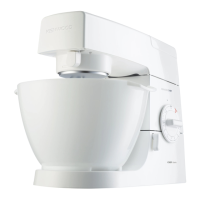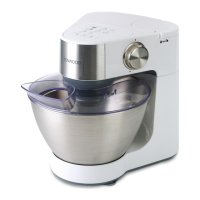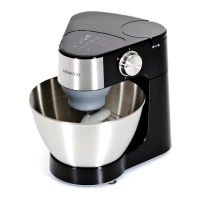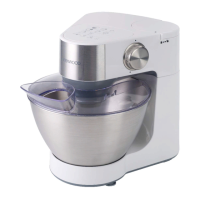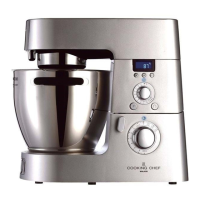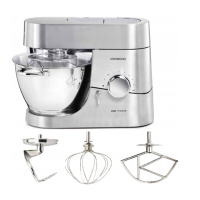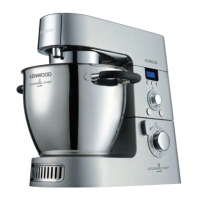important points for bread making
•
Never exceed the maximum capacities -
you will overload the machine.
• If you hear the machine labouring,
switch off, remove half the dough and
do each half separately.
• The ingredients mix best if you put the
liquid in first.
• At intervals stop the machine and
scrape the mixture off the dough hook.
• Different batches of flour vary
considerably in the quantities of liquid
required and the stickiness of the dough
can have a marked effect on the load
imposed on the machine. You are
advised to keep the machine under
observation whilst the dough is being
mixed.
electronic speed sensor control
Your mixer is fitted with an electronic
speed sensor control that is designed
to maintain the speed under different
load conditions, such as when kneading
bread dough or when eggs are added
to a cake mix. You may therefore
hear some variation in speed during
the operation as the mixer adjusts to
the load and speed selected - this is
normal.
5
the mixer
recommended speed chart and maximum capacities
These are a guide only and will vary depending upon the quantity of mix in the bowl and
the ingredients being mixed.
tool/
attachment
recipe type speed
maximum
time
maximum
capacities
Whisk
Egg whites
Max
3 mins
2-12 (455g)
Cream 2-3 mins
1 litre/35 fl oz
Beater
All in one cake mixes Max 2 mins 2kg /4lb 8oz
total weight
10 egg mix
Rubbing fat into flour
Adding water to
combine pastry
ingredients
Min to Speed 2
Min
2-3 mins
30 secs
680g/1lb 8oz
flour
Fruit Cake
2.72kg/6lb
total weight
9 egg mix
Creaming fat and
sugar
Max 1½ – 3½
mins
Adding eggs Max 1-2 mins
Folding in flour, fruit,
etc.
Min to speed 1 30 secs- 1
min
Dough hook Bread dough (stiff
yeasted)
Min to speed 1 5 mins 1.35kg/3lb
flour weight
2.17kg/4lb 13oz
total weight
*Egg sizes used = medium sized (Weight 53-65g)
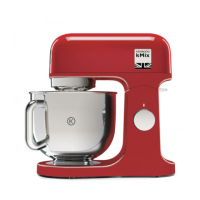
